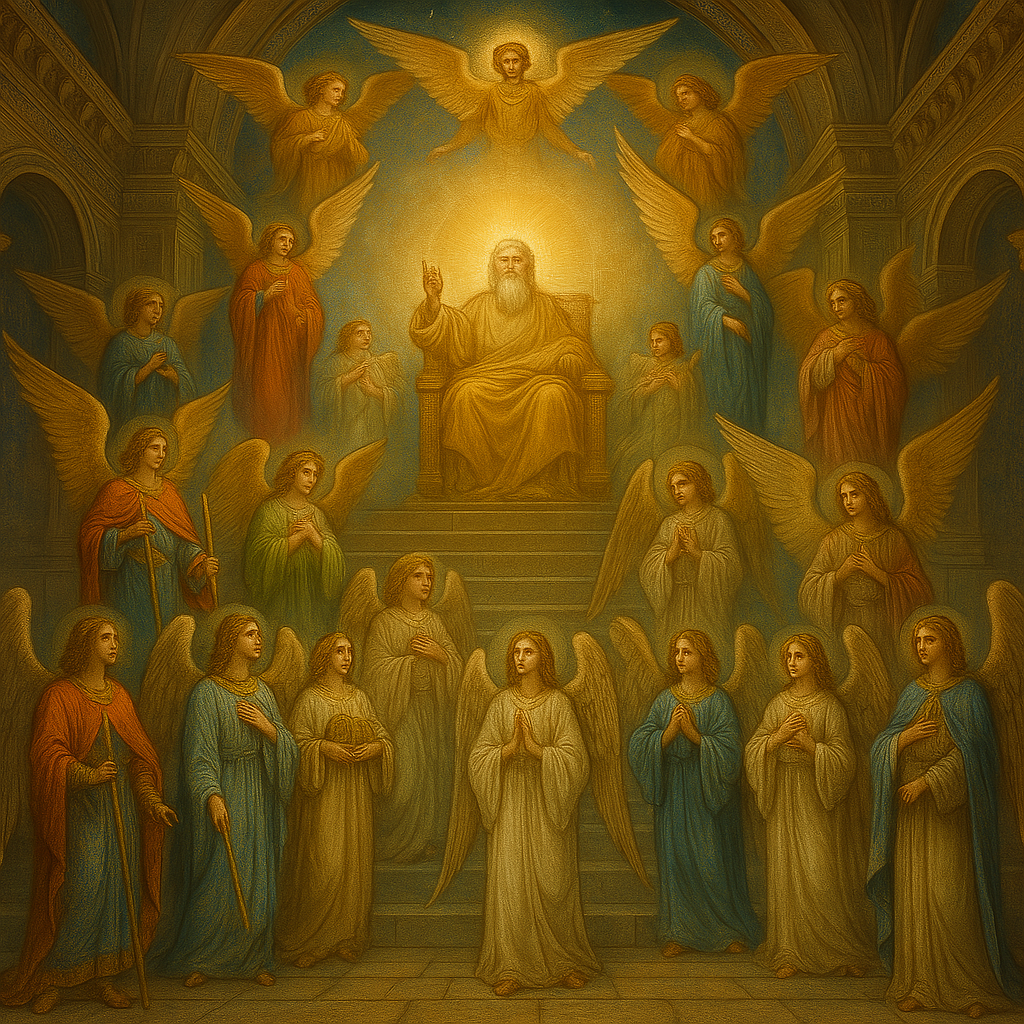Overview
The Angelic Realms and Divine Courts represent the structured hierarchies and domains within various spiritual and religious traditions that describe the organization and functions of angels. These entities are typically viewed as divine messengers, intermediaries, or agents of God’s will, each belonging to specific orders or choirs with distinct roles in the cosmos. These concepts are prevalent in many religious texts, including Christianity, Judaism, and Islam, each presenting a unique yet interconnected system of heavenly administration.
Theological Context and Structure
Judeo-Christian Perspectives
- Judaism: References to angels appear throughout the Torah and Talmud, where they act as messengers and protectors, each tasked with specific cosmic duties.
- Christianity: Angelology in Christianity is influenced by Judaic scripture but expanded in the New Testament and later theological works. The most recognized hierarchy is outlined by Pseudo-Dionysius the Areopagite, which categorizes angels into three hierarchies, each containing three orders or choirs.
Islamic Perspective
- Islam: Angels in Islam have well-defined roles, from the archangels like Jibreel (Gabriel) and Mikail (Michael) who deliver divine revelations and sustenance, to the recording angels who document individuals’ deeds.
Orders of Angels
Commonly, angelic orders in Christian angelology include:
- Seraphim
- Cherubim
- Thrones
- Dominions
- Virtues
- Powers
- Principalities
- Archangels
- Angels
Each order has specific functions, such as worshiping God, executing divine justice, or overseeing the material universe.
Roles and Functions
Divine Messengers
Angels act as God’s messengers, delivering divine revelations and guidance to humans. They are often depicted delivering critical news or instructions as seen in major religious texts.
Protectors and Guides
They provide protection and guidance, both on a personal level to individuals and on a grander scale in the form of guiding the fate of nations or humanity as a whole.
Record Keepers and Intercessors
Certain angels are tasked with recording the deeds of humans, interceding on their behalf, and carrying prayers to the divine, reflecting the concept of divine justice and mercy.
Worship and Praise
Angels continuously worship God, maintaining the divine presence and reinforcing the sanctity of the heavenly realms.
Cultural Impact and Symbolism
Angels permeate various cultural expressions, symbolizing purity, divine connection, and the transcendent nature of spiritual beings. They are featured in art, literature, and music, often embodying ideals of beauty and spiritual perfection.
Art and Iconography
Angels are depicted in countless works of art, from medieval manuscripts to modern paintings, often idealized with wings and haloed, signifying their divine nature.
Literature and Media
From Dante’s Divine Comedy to modern films and novels, angels are portrayed as complex characters who navigate the challenges of divine mandates and moral choices.
Conclusion
The Angelic Realms and Divine Courts offer a rich tapestry of spiritual insight, metaphysical structure, and moral guidance across various religious traditions. They encapsulate the human quest for connection with the divine, serving as a bridge between the earthly and the heavenly, the material and the spiritual. These celestial hierarchies reassure believers of a well-ordered cosmos where divine justice, mercy, and providence prevail, reflecting a deep, multifaceted relationship between humanity and the divine.

